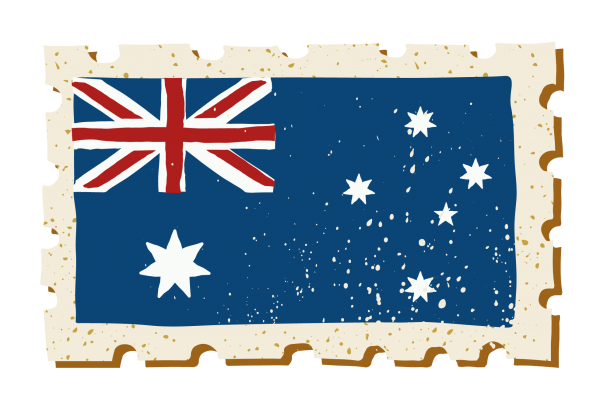In Canada, alongside traditional card payments, alternative methods such as PayPal and Amazon Pay are prevalent, providing online shoppers with convenient and secure transaction options. The adoption of mobile payments is on the rise, with services like Apple Pay and Google Pay widely accepted by merchants, streamlining the checkout process through smartphone transactions. To meet customer preferences and enhance sales potential, businesses in Canada must diversify their payment options, encompassing major credit cards, debit cards, and popular alternative methods. This comprehensive approach ensures adaptability to varying customer needs, fostering a broader customer base and maximizing sales opportunities for businesses in the Canadian market.
Popular offline payment methods in Canada
Cash
Debit Cards
Cheques
Money Orders
Bank Transfers
Mobile Wallets
Interac e-Transfers
List of payment methods in Canada
Visa is widely accepted as a payment method in Canada. It is one of the most popular and commonly used credit card brands in the country. Visa cards can be used at a wide range of merchants, including retail stores, restaurants, online retailers, and more. Additionally, many banks and financial institutions in Canada offer Visa credit cards to their customers. Visa also offers contactless payment options, such as Visa payWave, which allows users to make quick and easy payments by simply tapping their card or mobile device on a contactless payment terminal. Overall, Visa is a convenient and widely accepted payment method for Canadians.
Interac is a widely utilized payment method in Canada, functioning as a secure and convenient platform for electronic transactions. The network links financial institutions across the country, facilitating the transfer of funds. Interac offers various payment options, including Interac Debit, allowing direct purchases from bank accounts; Interac e-Transfer, enabling money transfers via email or mobile numbers; Interac Flash, allowing contactless payments through card or mobile taps; and Interac Online, facilitating secure online purchases directly from bank accounts. Accepted at numerous retail and online establishments, Interac is supported by major banks and institutions in Canada, providing users with encrypted transactions for heightened security. In essence, Interac plays a crucial role in offering Canadians a secure and convenient means of payment for both in-store and online transactions.
Mastercard is a highly accepted payment method in Canada, with widespread usability at various retailers, encompassing both online and in-store transactions nationwide. It finds acceptance in major grocery stores, department stores, restaurants, gas stations, and numerous other businesses. Beyond traditional card payments, Mastercard offers the convenience of contactless transactions through tap-to-pay technology, a feature embraced by many Canadian merchants. This technology allows users to seamlessly complete transactions by tapping their Mastercard on payment terminals. Additionally, Mastercard provides a range of benefits and rewards programs for cardholders, including cashback rewards, travel perks, and other incentives based on the specific credit card. Overall, Mastercard stands out as a convenient and broadly accepted payment option in Canada, simplifying the purchasing process for consumers in both online and physical retail settings.
PayPal is widely accepted as a payment method in Canada. It can be used for online purchases on various websites, including e-commerce platforms, online marketplaces, and individual sellers. PayPal can also be used for sending and receiving money between individuals or businesses. Additionally, many Canadian businesses accept PayPal as a payment option in their physical stores or for services rendered. To use PayPal in Canada, individuals need to create a PayPal account and link it to their bank account or credit card.
American Express is widely accepted as a payment method in Canada. It is accepted at most major retailers, restaurants, and online merchants across the country. American Express also offers a range of credit cards specifically designed for Canadian consumers, with various rewards programs and benefits. Additionally, American Express has a strong presence in the travel industry in Canada, with many travel agencies and airlines accepting American Express for bookings and purchases. Overall, American Express is a popular and widely accepted payment method in Canada.
Discover is a payment method that is accepted in Canada. Discover cards can be used at any merchant that accepts Discover, both online and in-store. Discover is widely accepted in Canada, especially at larger retailers and online merchants. However, it may not be accepted at smaller or local businesses, so it is always a good idea to check with the merchant beforehand. Additionally, some merchants may charge a foreign transaction fee for using a Discover card in Canada, so it is important to be aware of any potential fees before making a purchase.
Afterpay and Clearpay are both buy now, pay later services allowing consumers to make purchases and pay in installments. Afterpay is operational in Canada, offering a convenient four-payment plan without interest or fees if payments are timely. Accepted by diverse retailers, Afterpay spans industries like fashion, beauty, and electronics. Users create an account, link their debit or credit cards, and select Afterpay at checkout to complete purchases with a payment schedule. In contrast, Clearpay is not currently available in Canada, primarily serving the UK and Australia, though potential expansion into Canada has been discussed. In essence, while Afterpay is accessible in Canada, Clearpay is not, giving Canadian consumers the option of Afterpay for flexible payments at participating retailers.
Diners Club International operates as a global payment network, providing credit cards for both consumers and businesses. Although Diners Club cards are accepted at various establishments in Canada, including retailers, restaurants, and hotels, their acceptance is not as widespread as that of Visa or Mastercard. To use a Diners Club card in Canada, individuals simply present the card at the point of sale, where the merchant processes the payment through their terminal or online system. However, acceptance may vary among merchants, and some may require additional identification or a signature for verification. It is advisable to confirm a merchant’s acceptance of Diners Club cards beforehand and to have an alternative payment method on hand in case it is not accepted at a particular establishment.
Apple Pay was introduced in Canada in November 2015, marking one of the early expansions of the mobile payment service outside the United States. Available on iPhone, iPad, and Apple Watch, users can add their credit or debit cards to the Wallet app, either manually or by taking a photo. Transactions are authenticated using Touch ID or Face ID, with payments made by holding the device near a contactless terminal. Widely accepted at major Canadian retailers like Tim Hortons, McDonald’s, and Petro-Canada, as well as online merchants, Apple Pay has gained popularity for its convenience and security. Beyond payments, the service supports loyalty cards and rewards programs, allowing users to streamline purchases and access their loyalty cards effortlessly. Overall, Apple Pay has established itself as a preferred payment method in Canada, offering a secure and convenient solution for both in-store and online transactions.
JCB, or Japan Credit Bureau, is a prominent credit card issuer in Japan that has been actively working to expand its acceptance network in Canada. Although not as universally accepted as Visa or Mastercard, JCB has formed partnerships with payment processors and acquiring banks to increase its presence among Canadian merchants. This effort has led to a growing number of businesses in Canada now accepting JCB cards for both online and in-store transactions. Customers can use their JCB cards by presenting them or entering card details at checkout, with some merchants requiring additional verification. While acceptance is on the rise, it’s advisable for users to verify a merchant’s acceptance of JCB beforehand, as it may still be limited compared to other major credit card brands. This expansion benefits Japanese tourists and residents in Canada who hold JCB cards by providing them with an additional payment option.
Klarna, a widely used payment method in numerous countries, including Canada, enables online shoppers to defer payment for their purchases through installment plans. Particularly beneficial for customers facing financial constraints, Klarna offers various payment options such as Pay in 4 and Pay Later in the Canadian market. Pay in 4 permits customers to divide their payments into four equal parts, with the first due at the time of purchase and subsequent payments scheduled every two weeks. Alternatively, Pay Later allows customers to pay for their entire purchase within 30 days. To utilize Klarna in Canada, customers can choose it as their payment method during checkout on participating websites, providing personal information and agreeing to Klarna’s terms. However, it’s crucial to note that not all online retailers in Canada accept Klarna, prompting customers to check for the Klarna logo or available payment options at checkout. In summary, Klarna serves as a convenient payment solution for Canadian customers seeking to manage and extend the payment of their online purchases.
UnionPay is a highly accepted payment method in Canada, particularly among businesses catering to Chinese tourists and residents. Numerous merchants, including retailers, restaurants, hotels, and various establishments, acknowledge UnionPay cards for transactions. Beyond physical card payments, UnionPay provides mobile payment alternatives, such as QR code and mobile wallet payments, enabling users to make payments via their smartphones. To utilize UnionPay in Canada, individuals need a UnionPay card issued by a supportive bank, and they should verify with their bank to confirm availability. While UnionPay enjoys widespread acceptance, it’s advisable to check with merchants beforehand, as not all may support this payment method.
WeChat Pay, a prominent mobile payment system in China, has limited acceptance in Canada, though some businesses are adapting to the growing Chinese tourist and resident demographic by incorporating it as a payment option. To utilize WeChat Pay in Canada, users must connect their WeChat account to a bank account or credit card and can then make payments at participating establishments through the WeChat app by scanning QR codes or providing their WeChat ID. Notable businesses embracing WeChat Pay in Canada include luxury retailers, hotels, and restaurants catering to Chinese clientele, along with certain online platforms and e-commerce sites. Despite its increasing popularity, WeChat Pay is not as universally accepted as other payment methods like credit cards or mobile wallets, prompting the need to verify a merchant’s acceptance before using WeChat Pay.
Google Pay in Canada is a widely accepted digital wallet and payment method available on compatible Android devices with NFC capabilities. Users can download the Google Pay app, sign in with their Google account, and add a payment method by scanning or manually entering card details. After verifying the card, payments can be made at various retailers, restaurants, and online platforms displaying the contactless payment symbol. Additionally, Google Pay offers features like loyalty card and ticket storage, as well as peer-to-peer payments. Users should be aware that not all merchants in Canada accept Google Pay, so it’s advisable to confirm acceptance before attempting to use it as a payment method.
Alipay, a popular mobile payment platform in China, is not extensively embraced as a payment method in Canada, where credit cards and mobile platforms like Apple Pay and Google Pay are more commonly used. While some Canadian merchants may accept Alipay, its usage is not as widespread, and individuals visiting Canada are advised to check with establishments to ascertain its acceptance. Certain businesses catering to Chinese tourists or specific tourist destinations may be more inclined to accept Alipay. Despite Alipay’s efforts to expand internationally and collaborate with local payment providers, its partnership with SnapPay in Canada is limited, available only at select merchants. Consequently, while Alipay can be utilized in specific scenarios in Canada, it is not as universally accepted as other payment methods, prompting the recommendation to have alternative payment options when visiting the country.
Zip payment is not widely used in Canada. It is primarily used in Australia and New Zealand. In Canada, popular payment methods include credit cards, debit cards, and mobile payment apps like Apple Pay and Google Pay.
PaySafeCard is a widely used prepaid payment option in Canada, enabling users to conduct online transactions without requiring a credit card or bank account. Available for purchase at diverse retail outlets like convenience stores and supermarkets, the physical card contains a unique 16-digit PIN code that users input during online transactions. The purchase amount is deducted from the card’s balance. Versatile in its applications, PaySafeCard is accepted by numerous online merchants in Canada, spanning gaming sites, e-commerce platforms, and digital content providers, ensuring a secure and convenient payment process without divulging personal or financial details. For those who prefer a virtual approach, an online PaySafeCard account can be established, facilitating fund loading through various methods like credit cards or bank transfers and enabling online payments without the necessity of a physical card. Overall, PaySafeCard stands out as a popular and secure payment method in Canada, offering a straightforward solution for online purchases without the reliance on traditional banking methods.
Samsung Pay is a mobile payment service available for select Samsung devices in Canada, including the Galaxy S21, Galaxy Note20, Galaxy S20, and Galaxy A series. Users can securely store credit and debit card information on their devices through the Samsung Pay app, downloaded from the Google Play Store. The service supports both NFC and MST technologies, enabling contactless payments at various terminals. Samsung Pay goes beyond basic functionality by integrating loyalty cards, allowing users to store and use them directly from the app. Additionally, users can track transaction history and manage payment cards within the application, providing a convenient and secure payment experience with broad compatibility across terminals in Canada.



